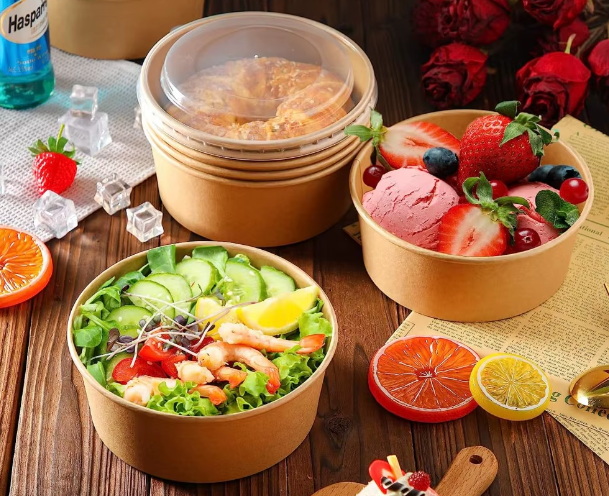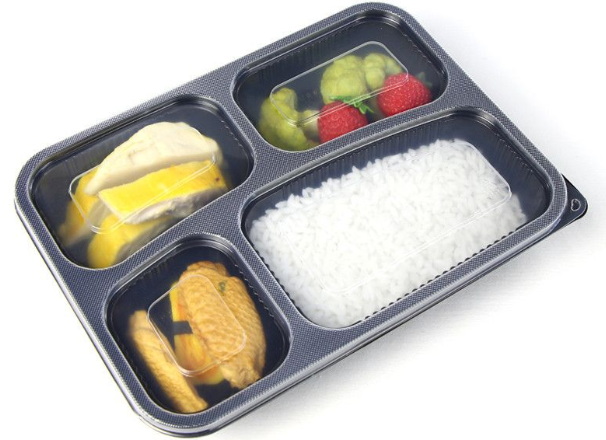
Content Menu
● Understanding Disposable Lunch Packing Boxes
>> What Are Disposable Lunch Packing Boxes?
>> Types of Materials Used
>>> 1. Plastic
>>> 2. Paper/Cardboard
>>> 3. Biodegradable Materials
>>> 4. Foam
● Can Disposable Lunch Packing Boxes Be Reused?
>> Potential for Reuse
>> Safety Concerns
>>> 1. Chemical Leaching
>>> 2. Contamination Risks
>>> 3. Structural Integrity
● Environmental Impact of Disposable Lunch Packing Boxes
>> Challenges
>>> 1. Waste Generation
>>> 2. Plastic Pollution
>>> 3. Carbon Footprint
>> Solutions
● Creative Ways to Reuse Disposable Lunch Packing Boxes
>> DIY Projects
>>> 1. Storage Containers
>>> 2. Planters
>>> 3. Crafts
>>> 4. Lunch Containers
>> Tips for Safe Reuse
● Alternatives to Disposable Lunch Packing Boxes
>> 1. Reusable Containers
>> 2. Eco-Friendly Packaging
>> 3. Bring Your Own Container (BYOC)
● Conclusion
● FAQs
>> 1. Can all disposable lunch packing boxes be reused?
>> 2. Are there health risks associated with reusing disposable lunch packing boxes?
>> 3. How can I recycle disposable lunch packing boxes?
>> 4. What are some creative ways to reuse these boxes?
>> 5. Are biodegradable lunch packing boxes better for the environment?
Disposable lunch packing boxes have become ubiquitous in modern food packaging, offering convenience, hygiene, and cost-effectiveness. They are widely used in restaurants, schools, and households for takeaway meals. However, as concerns about environmental sustainability grow, the question arises: can a disposable lunch packing box be reused? This article explores the possibilities of reusing these boxes, their environmental impact, safety considerations, creative reuse ideas, and practical solutions for reducing waste.

Understanding Disposable Lunch Packing Boxes
What Are Disposable Lunch Packing Boxes?
Disposable lunch packing boxes are single-use containers designed to hold food. They are made from various materials such as plastic, foam, paper, or biodegradable substances like bagasse. These boxes are lightweight, affordable, and easy to use, making them a popular choice for food packaging.
Types of Materials Used
The material composition of disposable lunch packing boxes determines their durability, environmental impact, and potential for reuse. Common types include:
1. Plastic
Plastic lunch packing boxes are often made from polypropylene (PP) or polystyrene (PS). They are sturdy and resistant to moisture but pose significant environmental challenges due to their non-biodegradable nature.
2. Paper/Cardboard
Paper-based boxes are typically coated with a thin layer of wax or plastic to make them resistant to moisture. While recyclable in some cases, they are prone to wear and tear after use.
3. Biodegradable Materials
Biodegradable options like bagasse (a byproduct of sugarcane) or polylactic acid (PLA) are gaining popularity due to their eco-friendliness. However, they degrade quickly and may not be suitable for reuse.
4. Foam
Foam containers are lightweight and inexpensive but are among the least environmentally friendly options due to their slow decomposition rate.
Can Disposable Lunch Packing Boxes Be Reused?
Potential for Reuse
Despite being designed for single use, many disposable lunch packing boxes can be reused under certain conditions. Here's a closer look at the possibilities:
- Plastic Boxes: Plastic containers can often be washed and reused multiple times if they remain intact and uncontaminated. Their durability makes them suitable for storing dry goods or organizing household items.
- Paper/Cardboard Boxes: These have limited reuse potential due to their susceptibility to moisture and structural degradation.
- Biodegradable Boxes: These are generally not suitable for reuse as they are designed to break down quickly in composting environments.
Safety Concerns
Reusing disposable lunch packing boxes is not without risks. Key safety concerns include:
1. Chemical Leaching
Certain types of plastic may release harmful chemicals when exposed to heat or acidic foods. For example, polystyrene foam containers can leach styrene into food when heated.
2. Contamination Risks
Improper cleaning can lead to bacterial growth in reusable containers. This is especially problematic if the box was used to store perishable or greasy foods.
3. Structural Integrity
Disposable boxes are not designed for long-term use and may degrade over time, compromising their ability to safely hold food.

Environmental Impact of Disposable Lunch Packing Boxes
Challenges
The widespread use of disposable lunch packing boxes has significant environmental consequences:
1. Waste Generation
Millions of disposable containers end up in landfills every year. Their single-use nature contributes heavily to global waste accumulation.
2. Plastic Pollution
Non-biodegradable plastics persist in ecosystems for centuries, harming wildlife and polluting water sources.
3. Carbon Footprint
The production and transportation of disposable lunch packing boxes consume large amounts of energy and resources, contributing to greenhouse gas emissions.
Solutions
To mitigate the environmental impact of disposable lunch packing boxes:
- Opt for reusable containers made from glass or durable plastics.
- Encourage recycling by properly cleaning and sorting disposable boxes.
- Support biodegradable alternatives that decompose faster in natural environments.
- Advocate for policies that reduce reliance on single-use packaging.
Creative Ways to Reuse Disposable Lunch Packing Boxes
DIY Projects
Reusing disposable lunch packing boxes creatively can reduce waste while adding value to your life. Here are some ideas:
1. Storage Containers
Clean plastic boxes can be repurposed as organizers for small household items such as screws, buttons, or craft supplies.
2. Planters
Cardboard or foam boxes can serve as temporary plant holders for seedlings or small indoor plants.
3. Crafts
Transform disposable boxes into decorative items like photo frames or toys for children using paint and other craft materials.
4. Lunch Containers
If the box is sturdy enough after cleaning, it can be reused as a container for dry snacks or non-perishable foods.
Tips for Safe Reuse
To ensure safe reuse:
- Wash the box thoroughly with warm water and soap.
- Avoid using damaged or cracked containers.
- Do not expose plastic containers to high heat (e.g., microwaving).
Alternatives to Disposable Lunch Packing Boxes
While reusing disposable lunch packing boxes is possible in some cases, switching to sustainable alternatives is the most effective way to reduce waste:
1. Reusable Containers
Invest in durable containers made from stainless steel, glass, or high-quality plastic that can be used repeatedly without compromising safety.
2. Eco-Friendly Packaging
Choose biodegradable packaging materials like bagasse or bamboo that decompose quickly without harming the environment.
3. Bring Your Own Container (BYOC)
Many restaurants now allow customers to bring their own containers for takeout orders—a simple yet impactful way to reduce reliance on disposables.
Conclusion
Disposable lunch packing boxes offer undeniable convenience but come with environmental and safety challenges when reused improperly. While certain types of boxes—particularly those made from durable plastics—can be reused under specific conditions, their single-use design limits their practicality for long-term applications. Creative reuse ideas can help reduce waste temporarily but should not replace sustainable alternatives like reusable containers or biodegradable packaging.
Ultimately, reducing reliance on disposable packaging requires collective action from consumers, businesses, and policymakers alike. By making informed choices about how we use and dispose of these products, we can contribute to a healthier planet while enjoying the benefits of modern food packaging.

FAQs
1. Can all disposable lunch packing boxes be reused?
Not all disposable lunch packing boxes are suitable for reuse. Plastic ones are more durable and can often be reused multiple times if cleaned properly, while paper-based and biodegradable options generally have limited reuse potential due to their fragile nature.
2. Are there health risks associated with reusing disposable lunch packing boxes?
Yes, there are health risks such as chemical leaching from certain plastics when exposed to heat or acidic foods. Additionally, improper cleaning may lead to bacterial contamination that could pose health hazards.
3. How can I recycle disposable lunch packing boxes?
To recycle these boxes:
- Clean them thoroughly before placing them in recycling bins.
- Check local recycling guidelines since not all materials may be accepted.
- Avoid recycling contaminated items as they may disrupt the recycling process.
4. What are some creative ways to reuse these boxes?
Creative reuse ideas include:
- Turning them into storage organizers.
- Using them as planters for small plants.
- Crafting decorative items like photo frames or toys using paint and other materials.
- Repurposing them as snack containers after proper cleaning.
5. Are biodegradable lunch packing boxes better for the environment?
Yes! Biodegradable lunch packing boxes decompose faster than plastic ones under composting conditions, reducing long-term environmental impact significantly compared to non-biodegradable options.

















